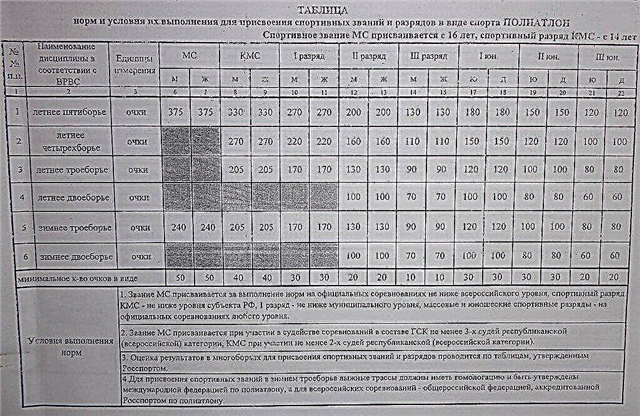Vitamin D is a combination of 6 fat-soluble substances. Cholecalciferol is recognized as its most active component, which, in fact, has all those beneficial effects characteristic of the vitamin.
In the 30s of the XX century, scientists studied the component composition of the structure of pork skin and found 7-dehydrocholesterol in it. The extracted substance was exposed to ultraviolet irradiation, as a result of which a unique powder with the chemical formula C27H44O was formed. They unsuccessfully tried to dissolve it in water, until they revealed its peculiarity to dissolve only in the presence of fatty acids in the substance. This powder was named vitamin D.
Subsequent studies have shown that in human skin this vitamin is synthesized from lipids when exposed to sunlight. After that, cholecalciferol is carried away to the liver, which, in turn, makes its own adjustments to its composition and distributes it throughout the body.
Characteristic
Many people know that vitamin D increases the absorption of calcium and phosphorus, normalizes their concentration in the body and is their intracellular conductor.
All types of human tissue, as well as internal organs, need vitamin D. Without a sufficient amount of it, calcium cannot pass through the cell membrane and is washed out of the body without being absorbed. Problems with bones and connective tissue begin.
Vitamin D action
- reduces nervous irritability;
- improves well-being and keeps the body in good shape;
- normalizes sleep;
- strengthens the walls of blood vessels;
- keeps asthma attacks under control;
- reduces the risk of diabetes;
- helps the absorption of calcium and phosphorus;
- helps to strengthen skeletal and muscle frameworks;
- accelerates metabolic processes;
- increases the body's natural defenses;
- prevents the occurrence of certain types of neoplasms;
- is a prophylactic agent for atherosclerosis;
- has a beneficial effect on sexual and reproductive function;
- prevents children's rickets.
Vitamin norm (instructions for use)
The need for vitamin D depends on age, geographic location, skin color, and regular physical activity.
In childhood and old age, as a rule, vitamin D is not synthesized enough. From here begins a calcium deficiency, which increases the risk of fractures and dislocations, and can also lead to rickets in children, and in adults - to diseases of the joints and bones.
People with dark skin should remember that their need for a vitamin is much higher than that of light-skinned people, since the passage of ultraviolet rays is difficult.
For newborns, vitamin D is vital for the formation of skeletal muscles and the prevention of rickets. But for babies, as a rule, the vitamin that is synthesized during daytime walks is enough. Additional reception must be agreed with the pediatrician.
Residents of sunny regions usually do not need additional intake of vitamin D, but those living in central Russia in winter need not only actively consume vitamin-containing products and take hour-long walks, but also supplement their diet with special supplements.
Experts have derived the average concept of the norm for a person. It should be understood that it is quite conditional, an adult who rarely goes outside during the day and receives little ultraviolet rays requires additional intake of vitamin D.
| Age | |
| 0 to 12 months | 400 IU |
| 1 to 13 years old | 600 IU |
| 14-18 years old | 600 IU |
| 19 to 50 years old | 600 IU |
| From 50 years old | 800 IU |
The need for vitamin in pregnant women has been separately derived, it varies from 600 to 2000 IU, but supplements can be taken only with the permission of a doctor. The bulk of the vitamin must be obtained naturally.
Important! 1 IU vitamin D: biological equivalent of 0.025 mcg cholecalciferol.
Sources of Vitamins D
Surely, everyone has heard such a thing as "sunbathing" They must be taken before 11 am and after 4 pm in the summer. It consists in being in the sun of open areas of the body without the use of protective equipment with an ultraviolet barrier. 10 minutes a day is enough for those with fair skin and 20-30 minutes for those with dark skin.
In winter, during the daytime, vitamin synthesis also occurs, albeit in small quantities. It is advisable to go outside on sunny days to get your dose of ultraviolet radiation, which is necessary for health.

© alfaolga - stock.adobe.com
Foods containing vitamin D:
Fish products (mcg per 100 g) | Animal products (mcg per 100 g) | Herbal products (mcg per 100 g) | |||
| Halibut liver | 2500 | Chicken egg yolk | 7 | Chanterelles | 8,8 |
| Cod liver | 375 | Chicken egg | 2,2 | Morels | 5,7 |
| Fish fat | 230 | Beef | 2 | Vesheneki | 2,3 |
| Acne | 23 | Butter from 72% | 1,5 | Peas | 0,8 |
| Sprats in oil | 20 | Beef liver | 1,2 | White mushrooms | 0,2 |
| Herring | 17 | Hard cheese | 1 | Grapefruit | 0,06 |
| Mackerel | 15 | Natural cottage cheese | 1 | Champignons | 0,04 |
| Black caviar | 8,8 | Natural sour cream | 0,1 | Parsley | 0,03 |
| Red caviar | 5 | Fat milk | 0,05 | Dill | 0,03 |
As we can see from the table, foods with a high vitamin content are exclusively of animal origin. In addition, vitamin D is absorbed only in a fat-containing environment and involves a one-time intake of fatty foods, which is categorically inappropriate for adherents of special diets. In case of insufficient sunlight, such people are recommended vitamin supplements.
Vitamin D deficiency
Vitamin D is the most prescribed dietary supplement, and is indicated even for newborns. Without it, the body is disturbed in the course of vital processes, which is fraught with serious consequences.
Deficiency symptoms:
- brittle nails;
- dull hair;
- the occurrence of dental problems;
- the appearance of skin irritations, acne, dryness and flaking, dermatitis;
- fast fatiguability;
- decreased visual acuity;
- irritability.
Lack of vitamin in babies can cause a serious illness - rickets. Its symptoms are, as a rule, increased tearfulness, excessive unreasonable anxiety, slow tightening of the fontanelle, decreased appetite. In such cases, you should contact your pediatrician.
Excess vitamin
Vitamin D is not able to accumulate in the body, it is consumed here and now, so it is quite difficult to get an overdose of it naturally. It is possible only if the existing norms for the intake of dietary supplements are exceeded, as well as if the rules for exposure to the sun are not followed.
In such cases, the following may occur:
- nausea;
- weakness;
- dizziness;
- a sharp weight loss up to anorexia;
- disruption of all internal organs;
- pressure surges.
With a slight manifestation of symptoms, it is enough to simply cancel the intake of supplements; more complex and long-term symptoms that do not go away require the intervention of doctors.
Vitamin for athletes
For people with regular physical activity, vitamin D is especially important. Due to its properties, it prevents the leaching of calcium from the bones, which helps to strengthen them and prevent the possibility of fractures. Vitamin strengthens not only bones, but also ligaments with cartilage due to the activation of calcium pumps. It helps the body recover faster after serious stress, gives the cells additional energy, increasing their resistance.
Having a beneficial effect on the walls of blood vessels, it allows them to adapt to the rhythm of training, while maintaining the amount of oxygen and nutrients carried.
Vitamin D helps many other vitamins and minerals get inside the cell, which helps to keep them functioning properly. It speeds up the regeneration processes, which is especially important in the presence of various types of injuries, including poorly healing ones.
Contraindications
It is strictly forbidden to take vitamin D supplements in case of open form of tuberculosis, in the presence of diseases associated with high calcium content.
In bedridden patients, vitamin intake should be carried out exclusively under the supervision of the attending physician.
It should be taken with caution in case of existing chronic diseases of the gastrointestinal tract, kidneys, liver and heart. In children, pregnant women, and the elderly, supplementation should be checked with a healthcare professional.
Interaction with other substances
Vitamin D is recommended to be taken together with calcium, since these are substances directly interacting with each other. Thanks to the vitamin, the microelement is better absorbed by the cells of bones and tissues.
As the level of vitamin D increases, magnesium is consumed more intensively, so it would be correct to combine their intake as well.
Vitamins A and E are also better absorbed under the influence of vitamin D; it prevents hypervitaminosis from occurring in excess.
It is not recommended to combine vitamin D with drugs whose action is aimed at lowering cholesterol levels, they block its passage into the cell.
Vitamin D Supplements
| Name | Manufacturer | Dosage | Price | Packing photo |
| Vitamin D-3, High Potency | Now Foods | 5000 IU, 120 capsules | 400 rubles | |
| Vitamin D3, Natural Berry Flavor | Child life | 400 IU, 29.6 ml | 850 rubles | |
| Vitamin D3 | Healthy origins | 10,000 IU, 360 capsules | 3300 rubles | |
| Calcium Plus Vitamin D for Kids | Gummi king | 50 IU, 60 capsules | 850 rubles |









